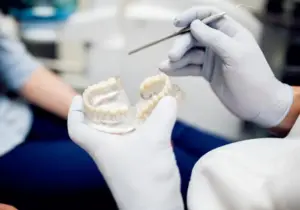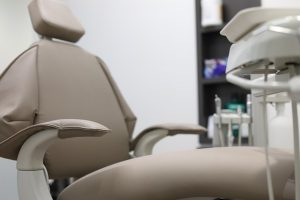We use it in tons of surgeries—whether you’re coming in for a nearly pain-free wisdom tooth removal or a more complex oral surgery, there’s a high chance you’ll be given some form of sedative used in mouth surgeries. You come in, sit in the chair with your surgeon next to you, and before you know it, you’ve woken up with your mouth transformed for the better.
We’re pretty thankful for it too. It saves our patients a great deal of pain and discomfort, and it makes our job of navigating a small space easier when the patient is unconscious. The majority of people have a wonderful experience with sedation methods associated with oral surgeries, however there are some things to know about recovery in the hours after coming to.
Understanding Sedation Recovery
To understand recovery, we have to first take a look at the different kinds of sedatives. There are a few main kinds of sedatives administered by oral surgeons.
- Localized: Local anesthetics are used in simple oral surgeries like fillings and, in some cases, wisdom teeth extractions. They keep the patient from feeling pain in an area, but they are very much conscious.
- Intravenous (IV): This is the form of sedation that knocks you out completely. IV sedation is used in oral surgeries that are lengthier and more complex, eliminating the chances that the patient moves around. It’s also a great choice for patients with severe dental anxiety.
- Oral: Dentists who use oral sedation prior to mouth surgeries give their patients common benzodiazepines to make them feel drowsy and minimize the feeling of pain.
Naturally, different types of sedatives are going to have different recovery timelines associated with them. How quickly a patient is able to recover is determined by a handful of factors like their age, overall health, and even the extent of the dental procedure that was just performed. As patients come out of their sedated state, they’re likely to exhibit symptoms like grogginess, fatigue, and some light confusion about what all just happened. This is completely normal and is to be expected after going in for an oral surgery operation.
Immediate Post-Sedation Care
Like we mentioned above, feelings of disorientation and fatigue are totally normal. As the next handful of hours progress, this feeling wears off as the remainder of the oral surgery anesthetic the patient took leaves their body. We hope it goes without saying, but any patient who has gone under surgery for having all their wisdom teeth taken out, mouth reconstruction surgery, or similarly intensive operations absolutely must have a designated driver to take them home. No ifs, ands, or buts.
Beyond the fact that the patient just had a serious surgical procedure done, folks who are still under the effects of sedatives cannot operate machinery under any circumstances. Sedatives majorly inhibit judgment and reflexes. Make designated driver arrangements with someone before you go to see your wisdom tooth removal surgeon for the big day. Any dental surgeon would gladly allow a designated driver to chill in the waiting room if it meant one less person for them to worry about.
Before patients make a haphazard beeline for their friend’s passenger seat, an experienced oral surgeon will want to monitor their patient’s vital signs and recovery for a short period of time prior to discharge.
Recovery at Home
Once the patient is back at home, still fully coming to from the effects of the anesthetics used in mouth operations, they should have a comfortable recovery space to hang out and remain undisturbed. Think big low-sensory vibes. Dimmed lights, quiet, not a ton of activity going on.
Rest and relaxation are of the utmost importance here. Patients are recommended to try to nap and rest for the remainder of the day and take things easy. Both due to coming out of surgery and having a sedative administered on them. Keep hydrated while resting and eat a diet of soft, bland food for the first few hours, barring any other advice from your oral surgeon. Patients might experience nausea, drowsiness, and dry mouth during this stage of the recovery period. Keeping up with hydration and napping intermittently are the best ways to combat this.
By the next day, all effects of the sedative should be gone, at which point the patient will want to really hone in and focus on post-operation care instructions provided by your oral healthcare provider. Sedatives are a wonderful way to minimize pain and discomfort during surgery, and by adhering to these post-sedation care tips, it couldn’t be easier.










